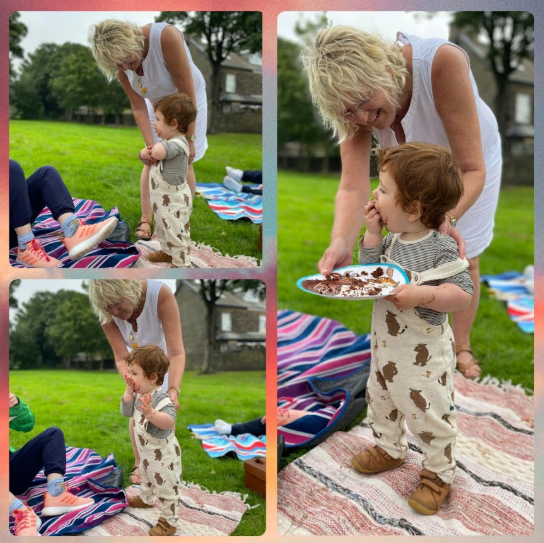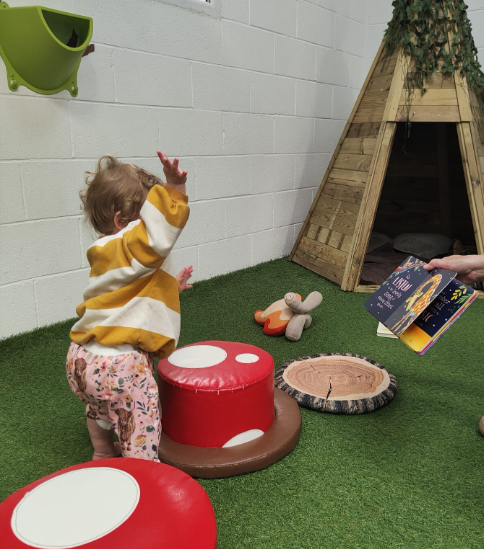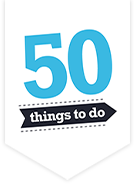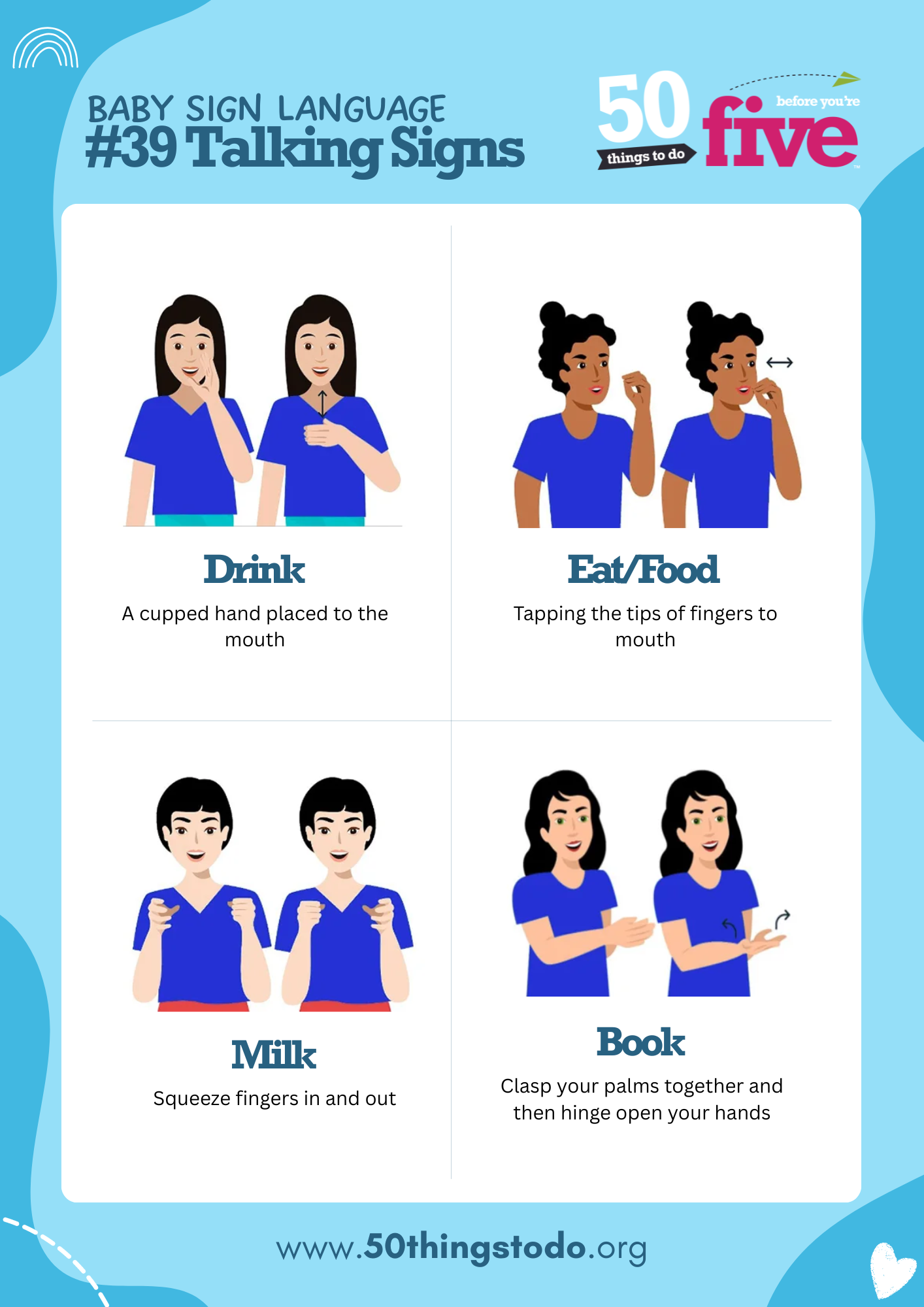Parent’s POV: Let’s talk about #39 Talking Signs
27/05/2025
If you have wondered whether or not to introduce signing, and want to know more about the impact it can have, have a read of one parent’s experience of signing with her two children, G and E, aged 5 and 1.
Beginning to use sign language
I was introduced to Makaton through my job, working in early years, and I saw the difference using Makaton had on children’s speech and language development. So when I had children, it was something I knew I wanted to do with them.
When I had my first child, G, I joined a Sing and Sign class with other mums. The class was a good opportunity to learn in a fun way and get to know other mums. There are so many baby signing groups out there and I remember how reassuring the group’s leader was in telling all parents that every child is different, some take a long time to learn signs and others are quicker.
If you want to try a baby signing class for you and your child, take a look at the local links feature on our 50 Things website or app - you can find the perfect playful group for you!
Using sign language to communicate
At 9 months old, G, used his first sign - which was “Milk”, and I remember being utterly amazed and him being able to sign to me and understanding what the gestures meant. All of a sudden we could communicate with each other!
After that initial sign, I started to incorporate more signs into my daily routine and G picked these up naturally. I noticed that G understood more signs than he used himself. This is still communication between parent and child as the connection and understanding of signing with your child is the most important part!
A lot of friends and strangers have commented that G has always been a really good talker, and I have always believed that this is because he could communicate effectively with signing, even before he could form words.
G’s main use for signing was always to request. He would sign for food usually such as “Milk”, “Cake” and “More”.

My other child, E, uses signs to communicate what she is doing or to describe it. For example, if she is playing with a toy cow, she will use the sign for cow. She shows a real interest in descriptive words.

How quickly can children pick up signs?
G picked up his first sign at 9 months, by the time he was 1 year old he could confidently use 20 signs! E picked up signs first when she was 10 months old, and I see how proud E is of herself when she signs. It makes me feel so proud that she is communicating with me and I have taught my child a new skill.
Advice to parents thinking about starting to sign with their children
-
If you can’t join a signing group, there are loads of videos on YouTube that are really helpful to learn different signs and super easy.
-
Make signing a part of your everyday routine, think basic needs - like eat, more, drink, that you naturally would use and can easily do around your day. Repeating these all the time will naturally make the motion second nature and easier for your child to learn.
-
You can use #39 Talking Signs at any time or place. At 50 Things to Do Before You’re Five our activities can be completed indoors or outdoors, within your local community or at home. All parents are encouraged to use our activities whichever way suits you and your family!
-
Try to pick up on the interests of your child and find out the signs for these - E really likes the book Dear Zoo, so I learnt the signs for each of the animals mentioned to help her learn new words to use whilst we read.
The benefits of signing
I’ve seen that my children are less frustrated as they can use signs to ask for things they need or want like food, milk or ask for more. It can be distressing for children before they can speak that they can’t communicate their needs with their parent(s). Signing really helped with my children’s happiness.
Face to face interaction is a great bonding tool for you and your child. While you’re signing, you can complete another 50 Things activity, #1 Get to Know You! Having back and forth interactions when communicating with your child allows them to react and respond to you and vice versa. It can also help you both communicate with each other long before your baby starts to speak.
A little tip from us!
-
Tackle a few signs at a time and take it slowly.
-
You need to be confident in using the signs in order to teach them to your child.
-
When using signs remember to make eye contact and get down to your child’s level.
-
Concentrate on no more than five at a time and see how it goes!
If you fancy trying to sign, have a look at our 50 Things Talking Signs resource, download the resource here!
Don’t forget to take a look at our other activities and discover lots of playful inspiration for you to try out with your family! Click here to see our 50 Things.
Amelia Mather, Creative Content Writer

